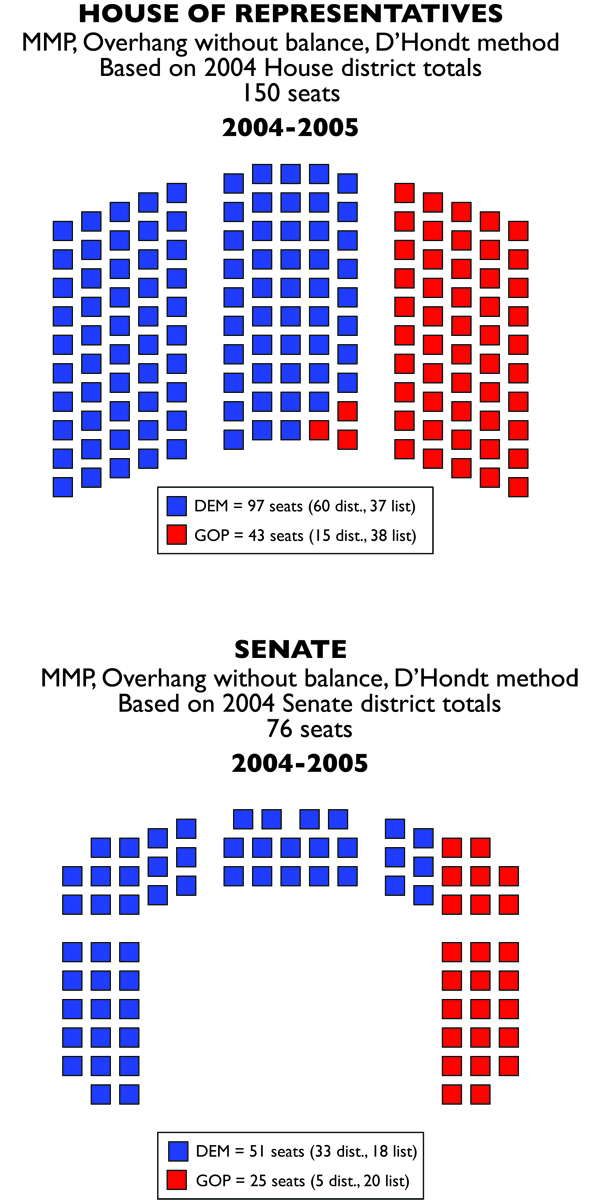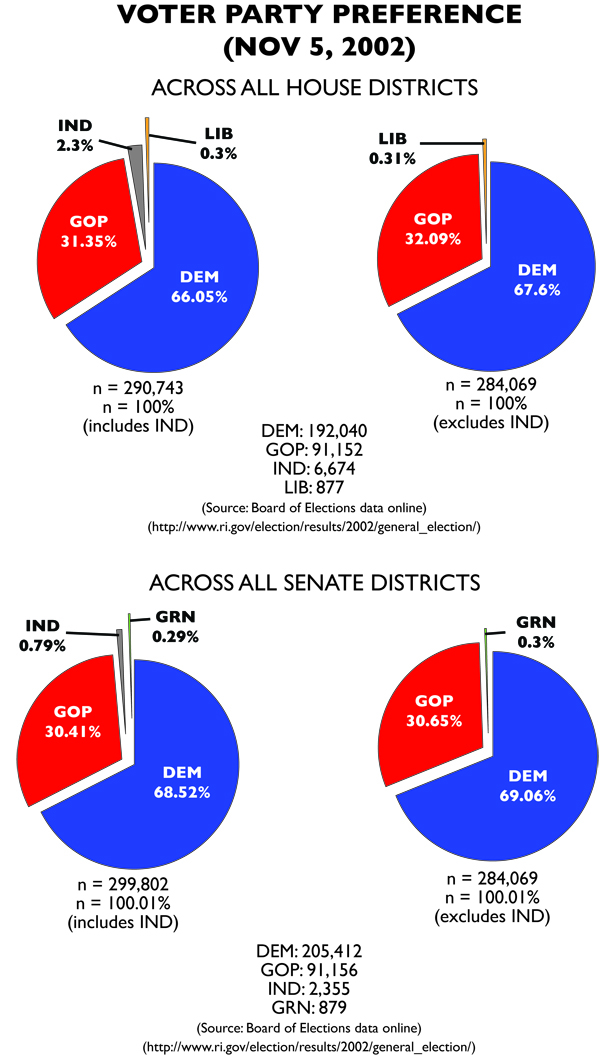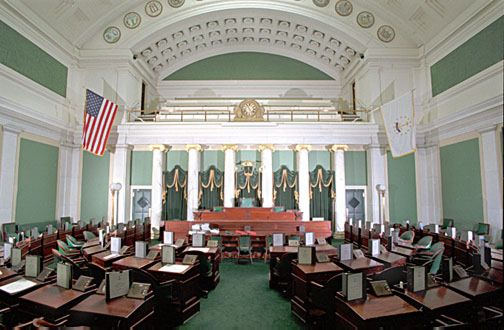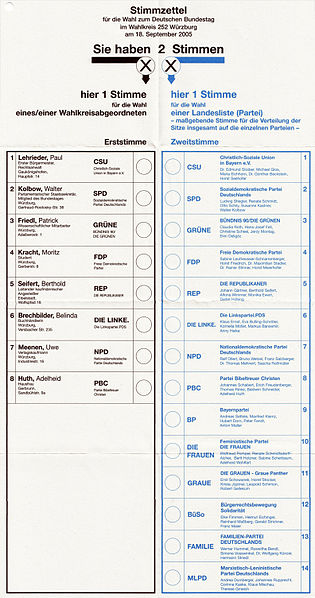
Turnout was expected to be high in a presidential election year. The Iraq War, which had seen a nation toppled in less than a month, was entering a bloody phase. In April, the US Marines had been defeated at Fallujah, almost exactly a year after President Bush had declared “Mission Accomplished” aboard the USS Abraham Lincoln. Sen. John Kerry of Massachusetts attempted to hold Bush to one term, in a divisive election that helped solidify the idea of a “red state-blue state” divide in America.
Though Rhode Island was decisively a blue state, a dispute between Providence’s firefighters and Mayor Cicilline prevented Vice Presidential candidate John Edwards from visiting Rhode Island, as he refused to cross the union picket line.
In the General Assembly, Democrats lost seats, even as they won a new seat in Senate. Republicans seized upon that seat gain to suggest that redistricting was a problem; how had Democrats managed to gain a new district seat if their share of the votes had gone down? Democrats countered with the fact that a renewed emphasis on contesting seats had yielded the Republican four new district seats, defeating four Democrats in head-to-head races. Perhaps if Republicans focused on running instead of complaining, they might do better.
In total, Republicans gained two seats in the Senate and five seats in the House. Republicans told their members they were doing better, and the end of Democratic control was coming soon. Democrats grumbled.
Implications
In reality, though the Republicans gained four seats in the House, they actually lost a seat in the Senate. 2004 was the high watermark for Republican turnout, not as a percent wise, but total votes. In both House and Senate races, over 120,000 people cast their votes for Republican candidates. Collectively, Republican candidates tend to must 30,000 to 20,000 votes less. Though Republicans managed to turnout in large numbers, Democrats turnout in even higher numbers, improving somewhere around 40,000 voters over 2002.

This is Part 5 of the MMP RI series, which posits what Rhode Island’s political landscape would look like if we had switched to a mixed-member proportional representation (MMP) system in 2002. Part 4 (the Election of 2002) is available here. Part 6 is a look at the Election of 2006.







